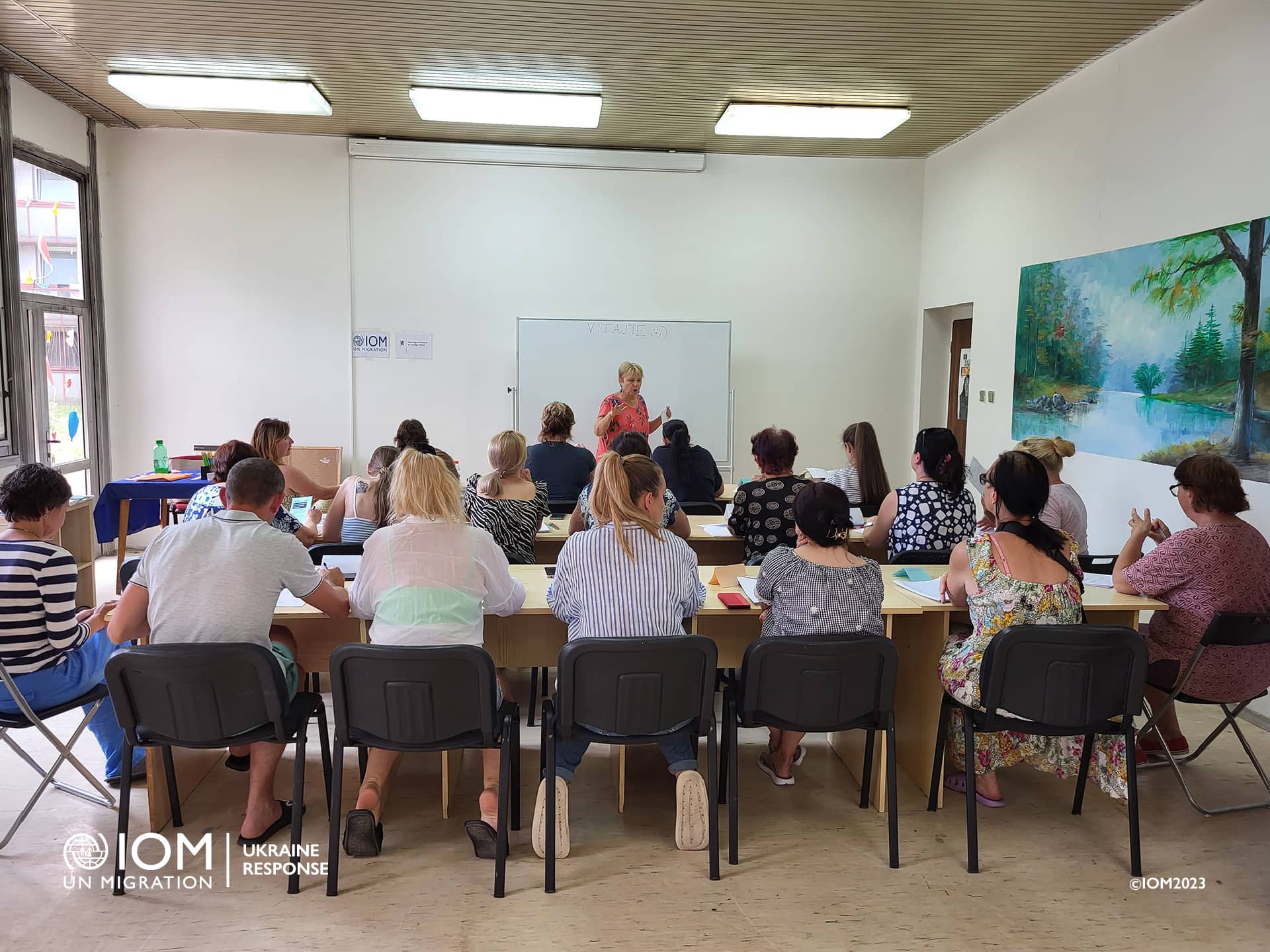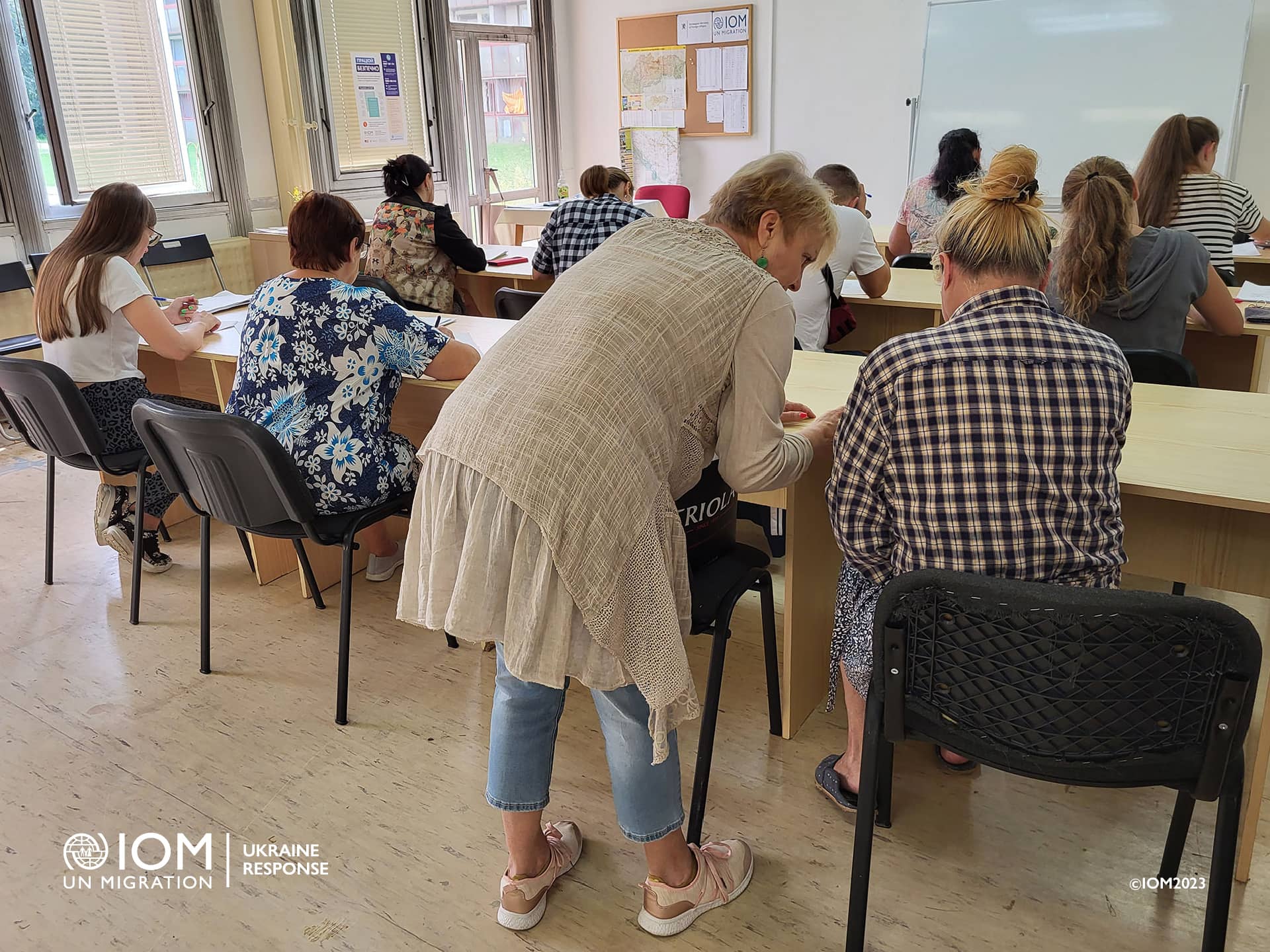“Ako sa máš? Mám sa dobre. A ty?” [How are you? I’m well. And you?]. We hear people chatting as we enter a fully packed classroom in the Humanitarian Centre in Gabčíkovo, southern Slovakia, during a summer course.
The centre harbours more than 700 hundred women, men and children who fled the war in Ukraine after it broke out in February 2022.
The IOM started organising free, open Slovak language courses at the Humanitarian Centre in Gabčíkovo in April 2022. More than 170 people from Ukraine have participated in them in 2023 alone.

More than 170 people from Ukraine have participated in Slovak language courses at the Humanitarian Center in Gabčíkovo over the past year. Photo © International Organization for Migration (IOM) 2023.
For the summer, the IOM team decided to offer an intensive two-month course in July and August 2023 to strengthen and advance the participants’ Slovak language skills. Young and elderly from Ukraine, all adults, regardless of age, can be seen in the classroom. Eyes on the teacher, everyone concentrates hard and tries to catch and remember every word.

Individual work with students is essential in language teaching. Photo © International Organization for Migration (IOM) 2023.
Although the proximity of the Slavic languages might be helpful, they say that Slovak is not easy to master, not to mention words that are so-called “false friends” (words very similar in the two languages but with a different meaning). So, what drives their motivation?
“I want to find work”, says Svitlana, 47, one of almost 50 students of the summer course organised at the Humanitarian Centre in Gabčíkovo. “I’m learning Slovak to further integrate into Slovak society”, adds Marina, 55. “I wish to know more about the legislation”, says Nataliia, 70, surprisingly. Better understanding the country and the culture, connecting with people, and overcoming the language barrier at the doctor’s, in the shop, at the pharmacy, in transport, and other everyday situations is a strong motivation for many. Iryna, 53, and Oksana, 42, want to be role models for children from Ukraine in the school where they both work and help them with Slovak from an early age. “It’s crucial”, Iryna says, gesticulating passionately.
“They work hard and ask a lot of questions”, teacher Alica reveals. “They want to know every detail and even ask for homework. I am so very proud of them”.

IOM offers Slovak language courses in every regional city and in other towns in Slovakia. Photo © International Organization for Migration (IOM) 2023.
Innovatively, the IOM introduced protective elements into language learning. This equipped people fleeing from the war in Ukraine with examples of how to react when found in a vulnerable situation. Benefiting from the summer vibes, the IOM team also introduced them to safe travel rules.
About 3000 people who fled Ukraine participated in the free open Slovak language courses organised by the IOM Migration Information Centre across Slovakia. To learn more about free and open Slovak language courses, online resources and, in general, about the free advice and services for migrants provided by the IOM MIC, please visit www.mic.iom.sk.
“Milujem slovacky jazyk,” [I love the Slovak language] concludes Anna, 62.
Written by: Jana Hönschová
With the support of:

Funded by the Norwegian Ministry of Foreign Affairs.
 Slovenčina
Slovenčina
 Українська (Україна)
Українська (Україна)
 English
English
